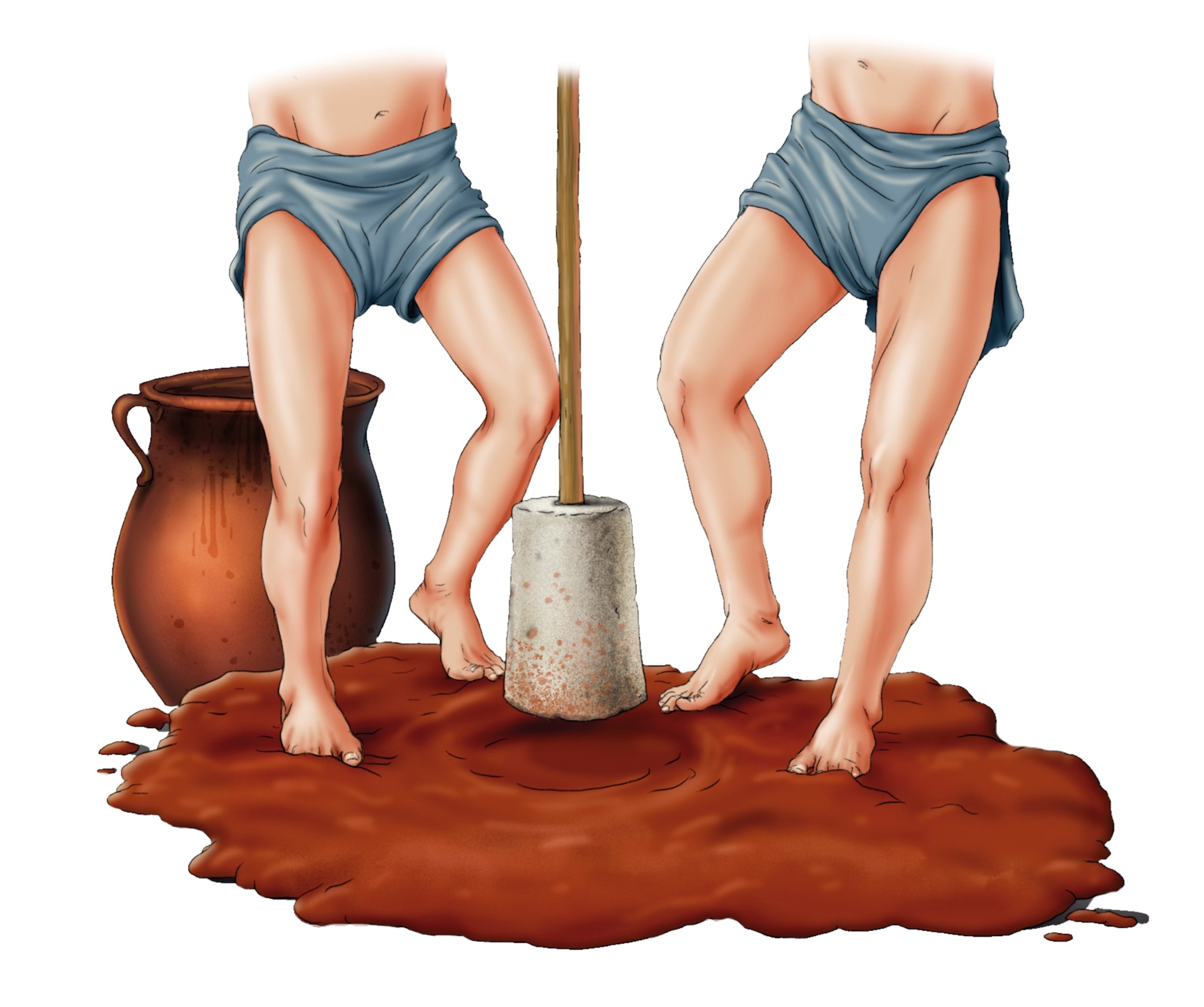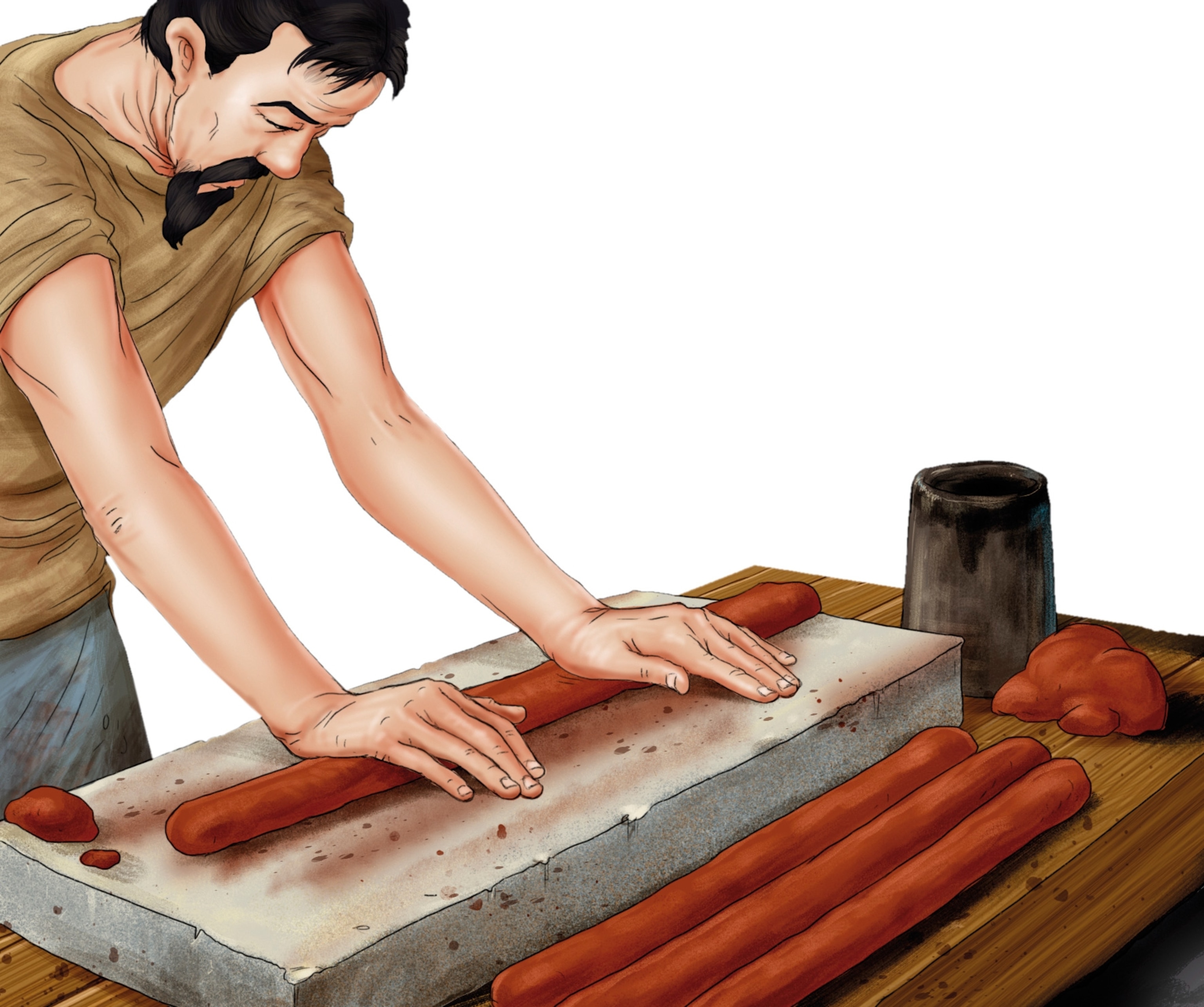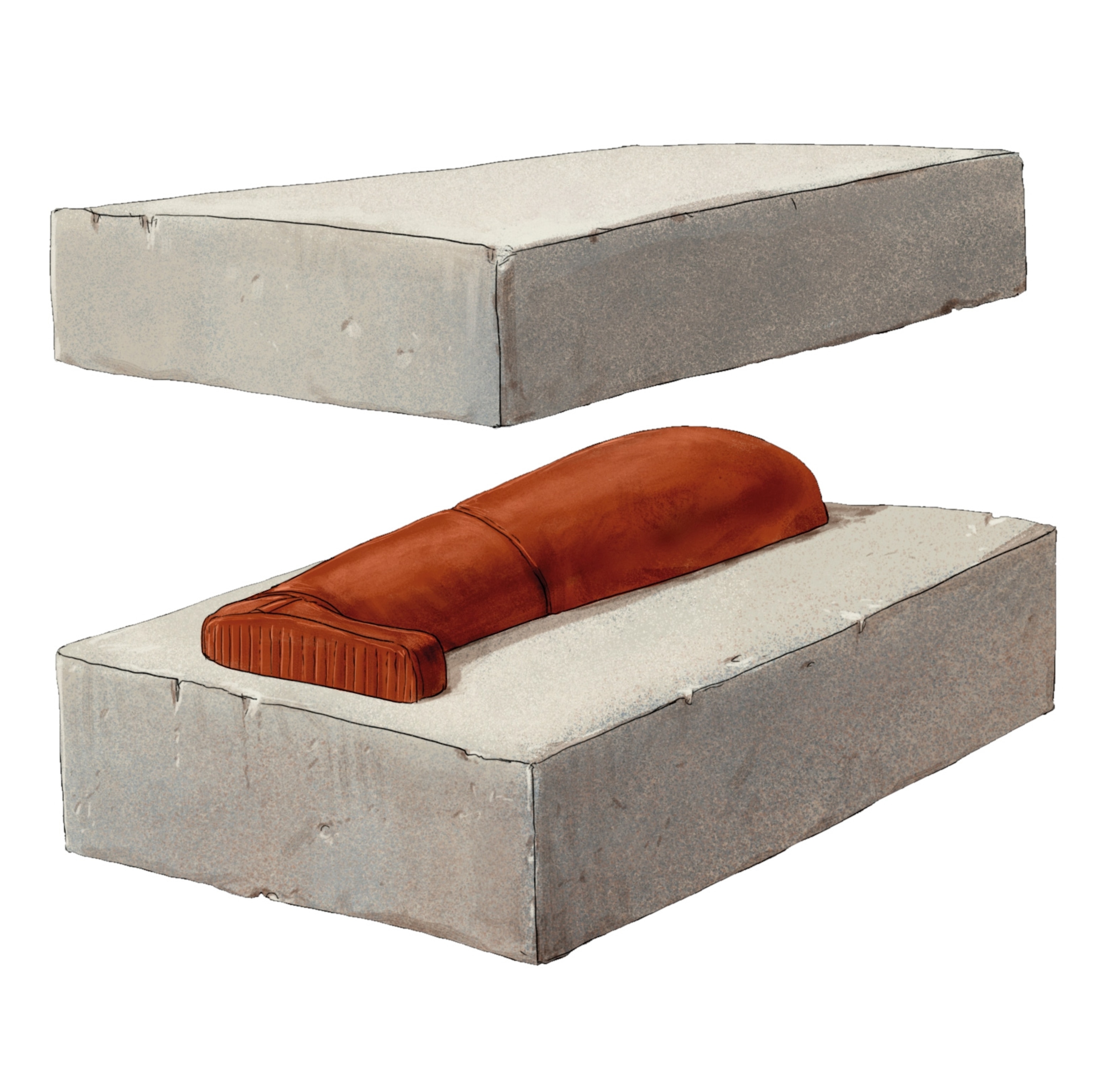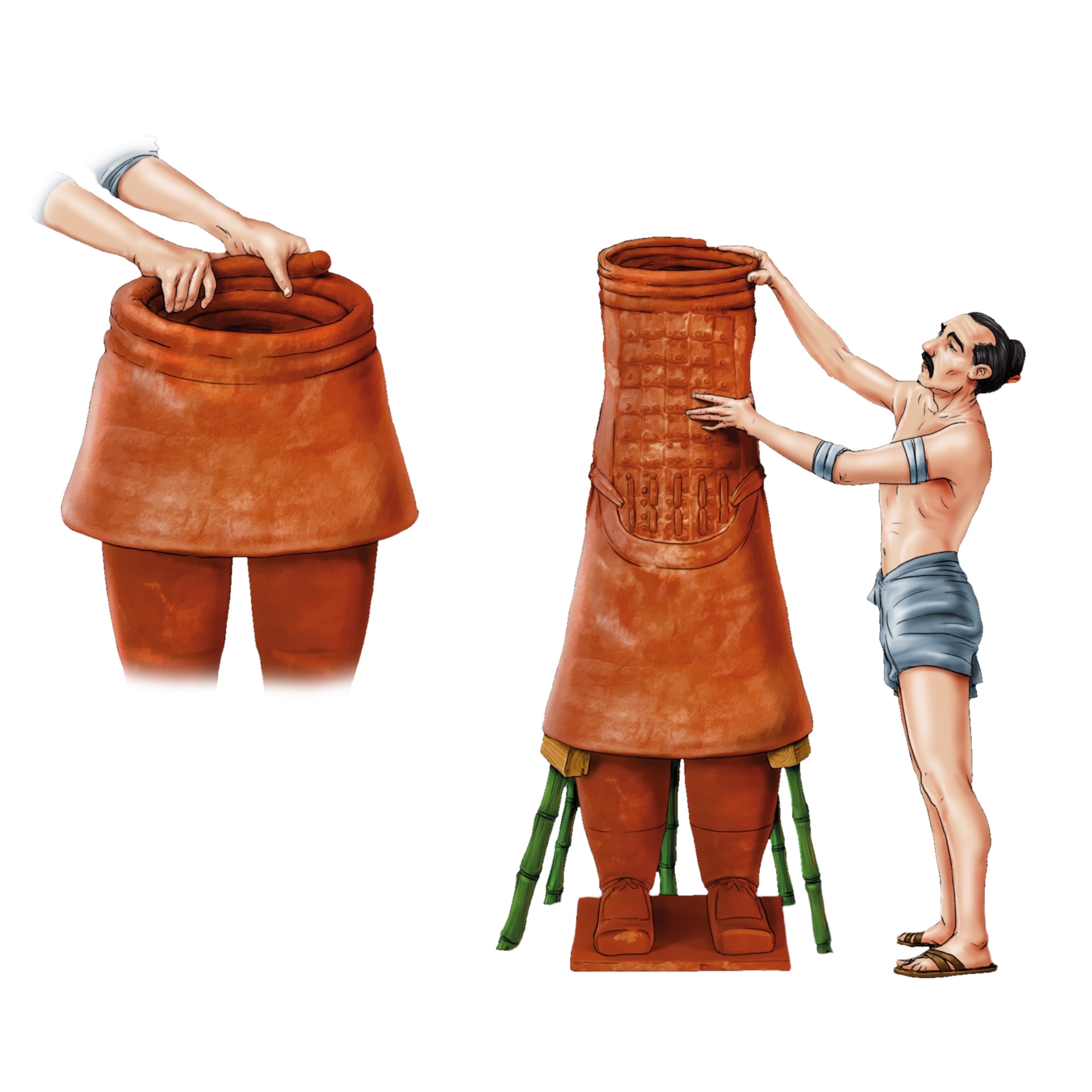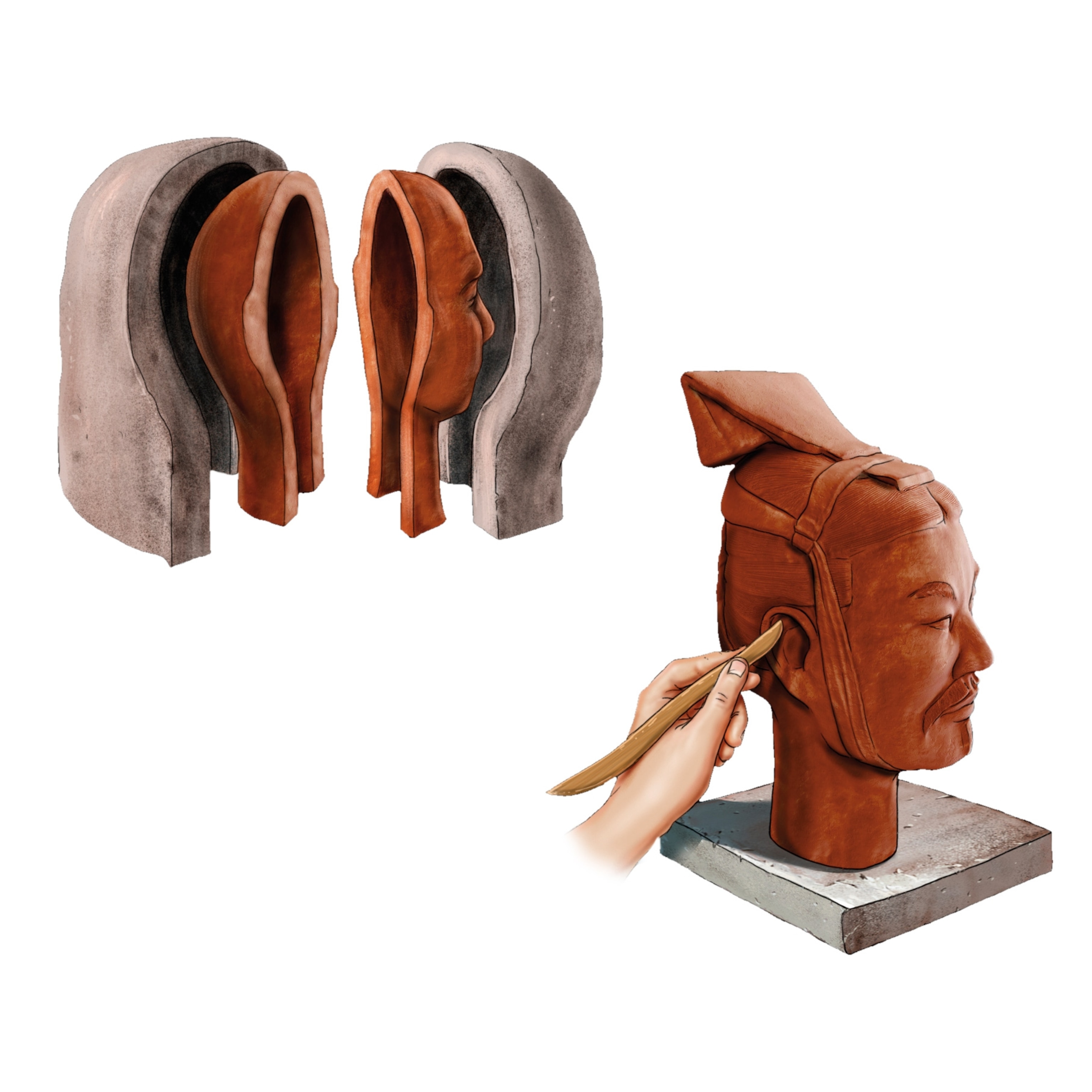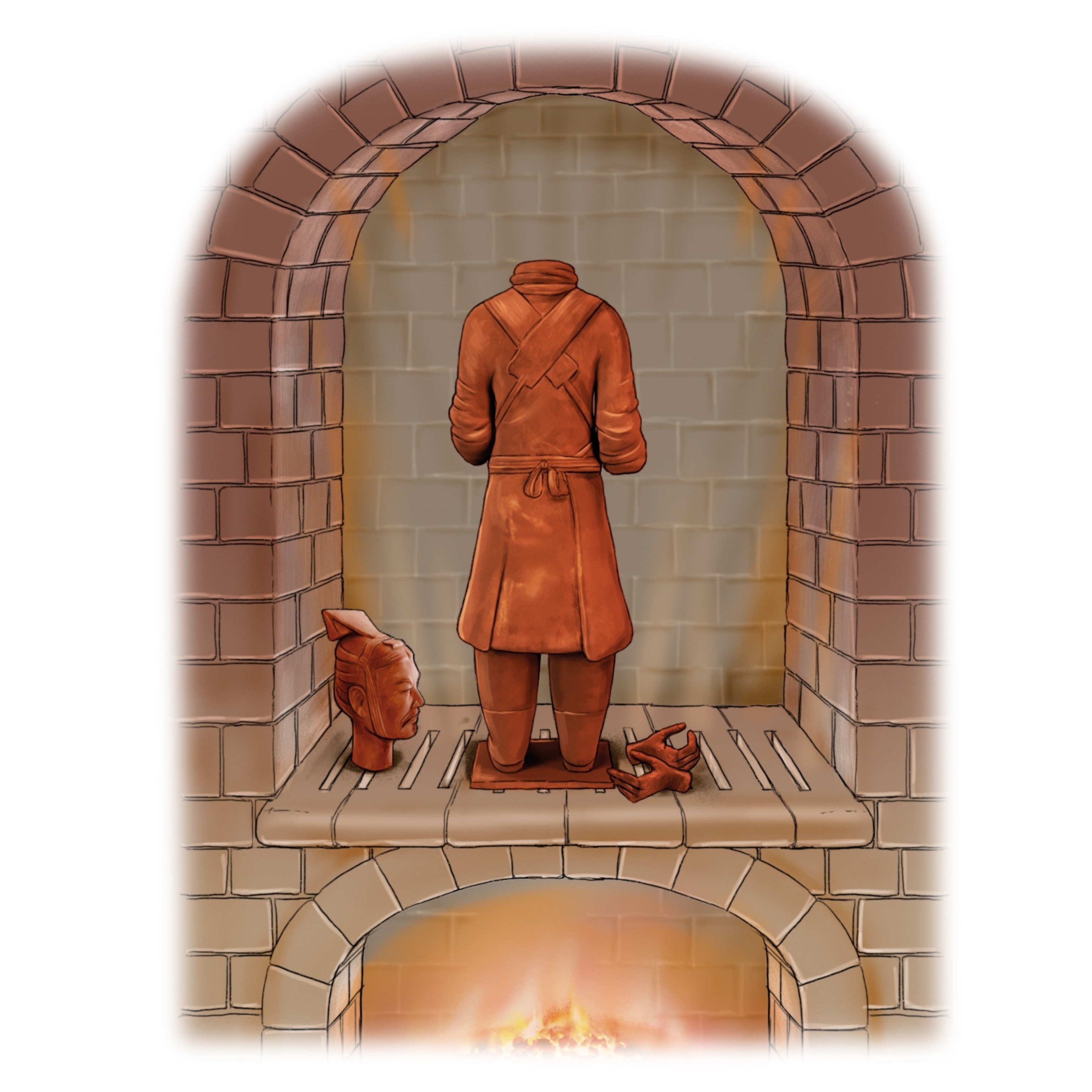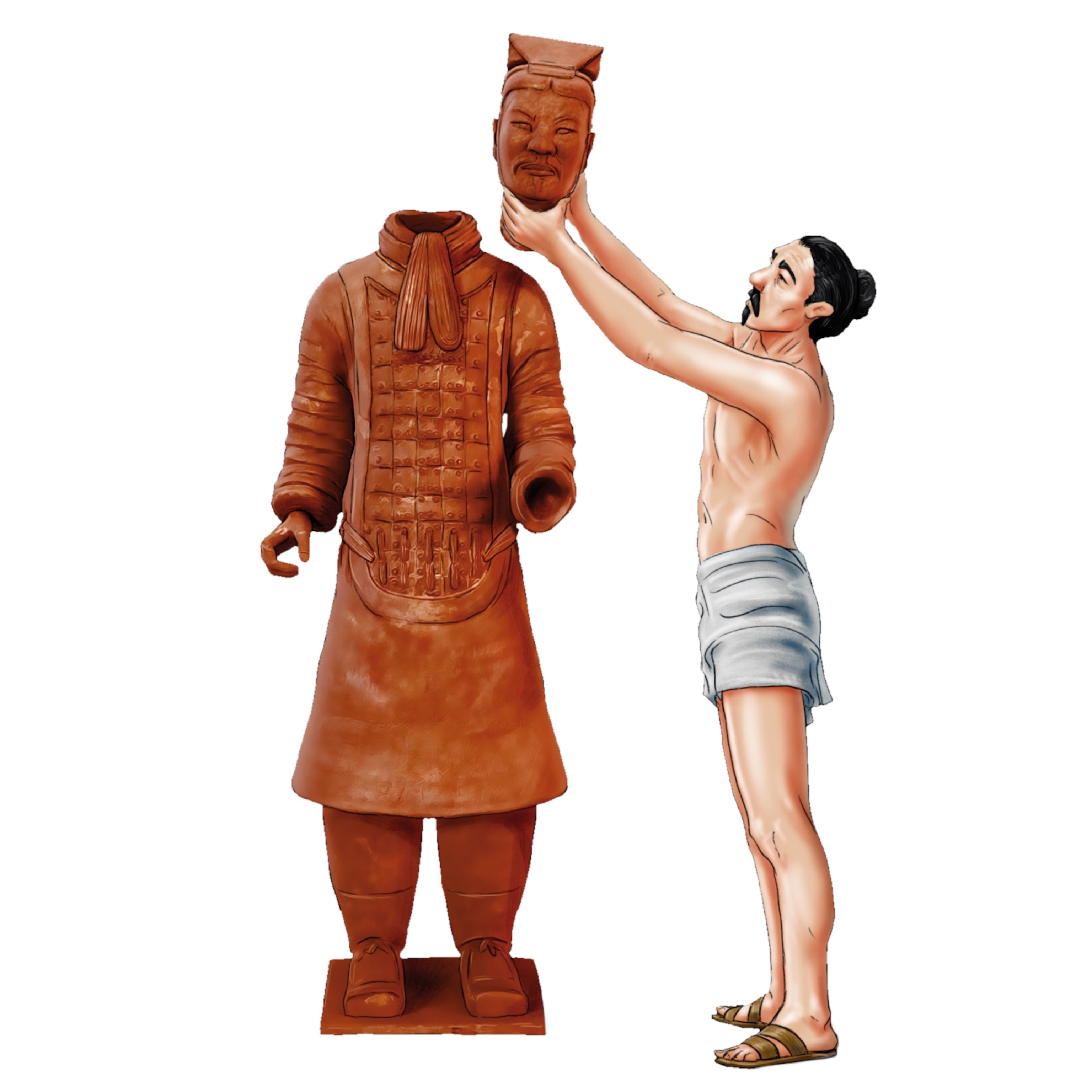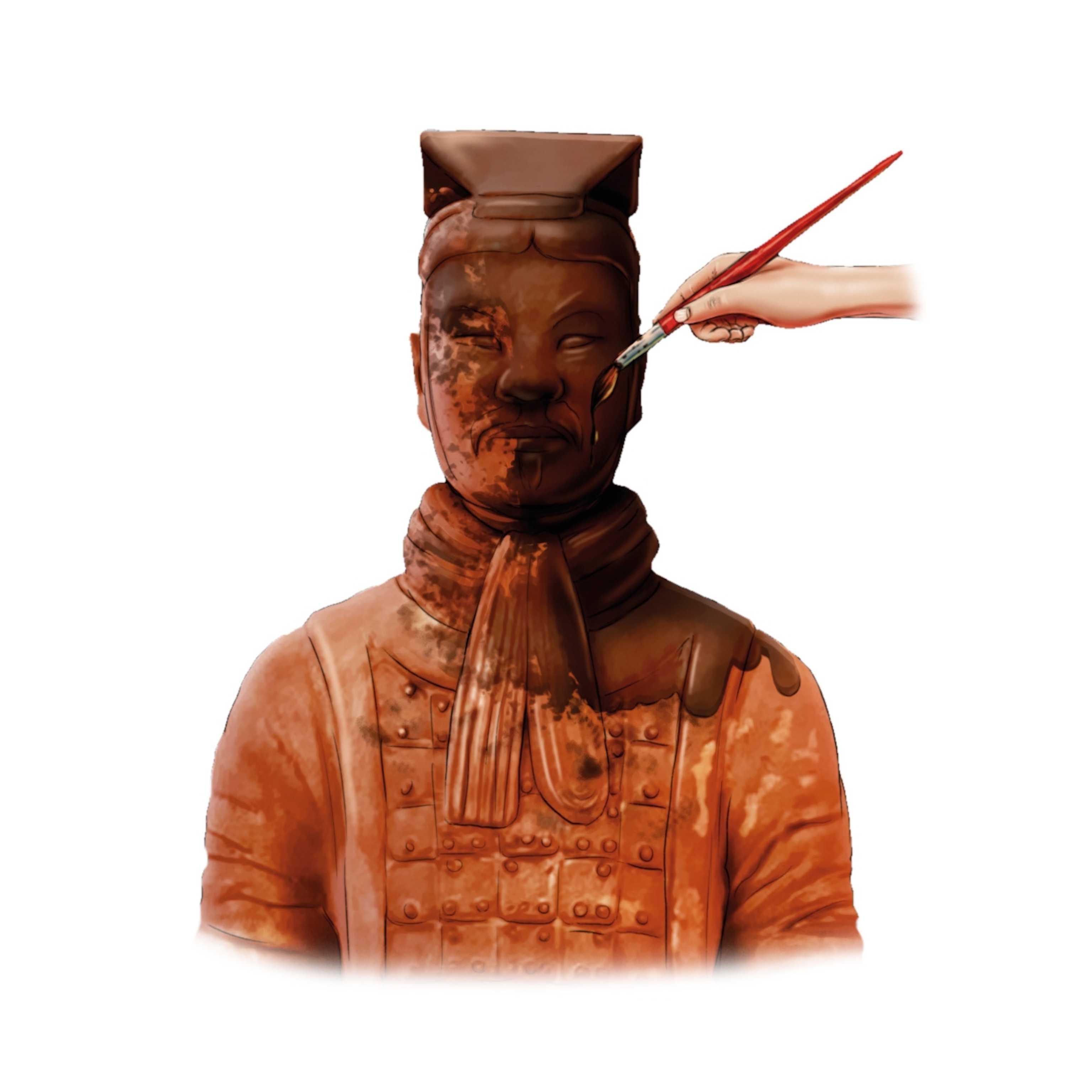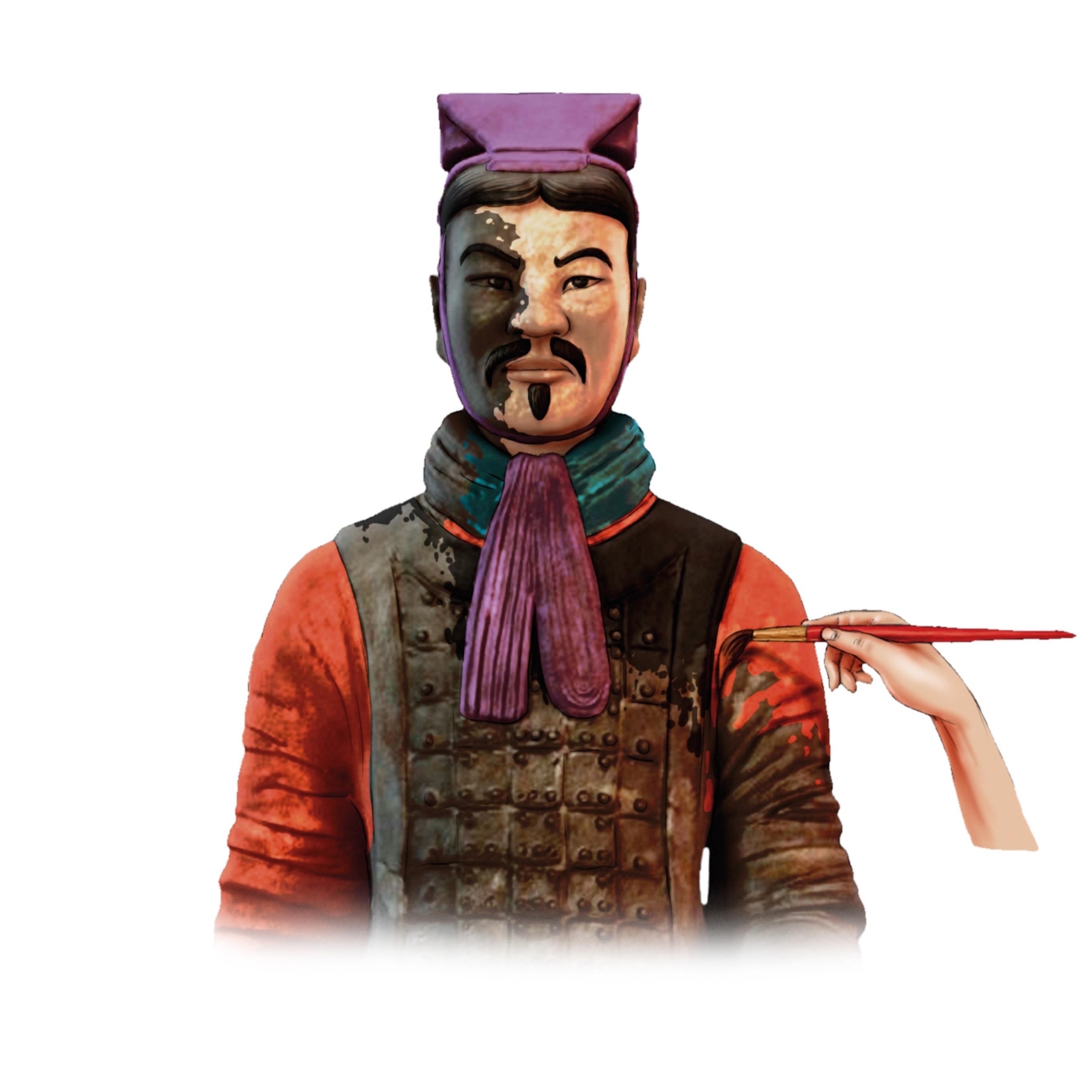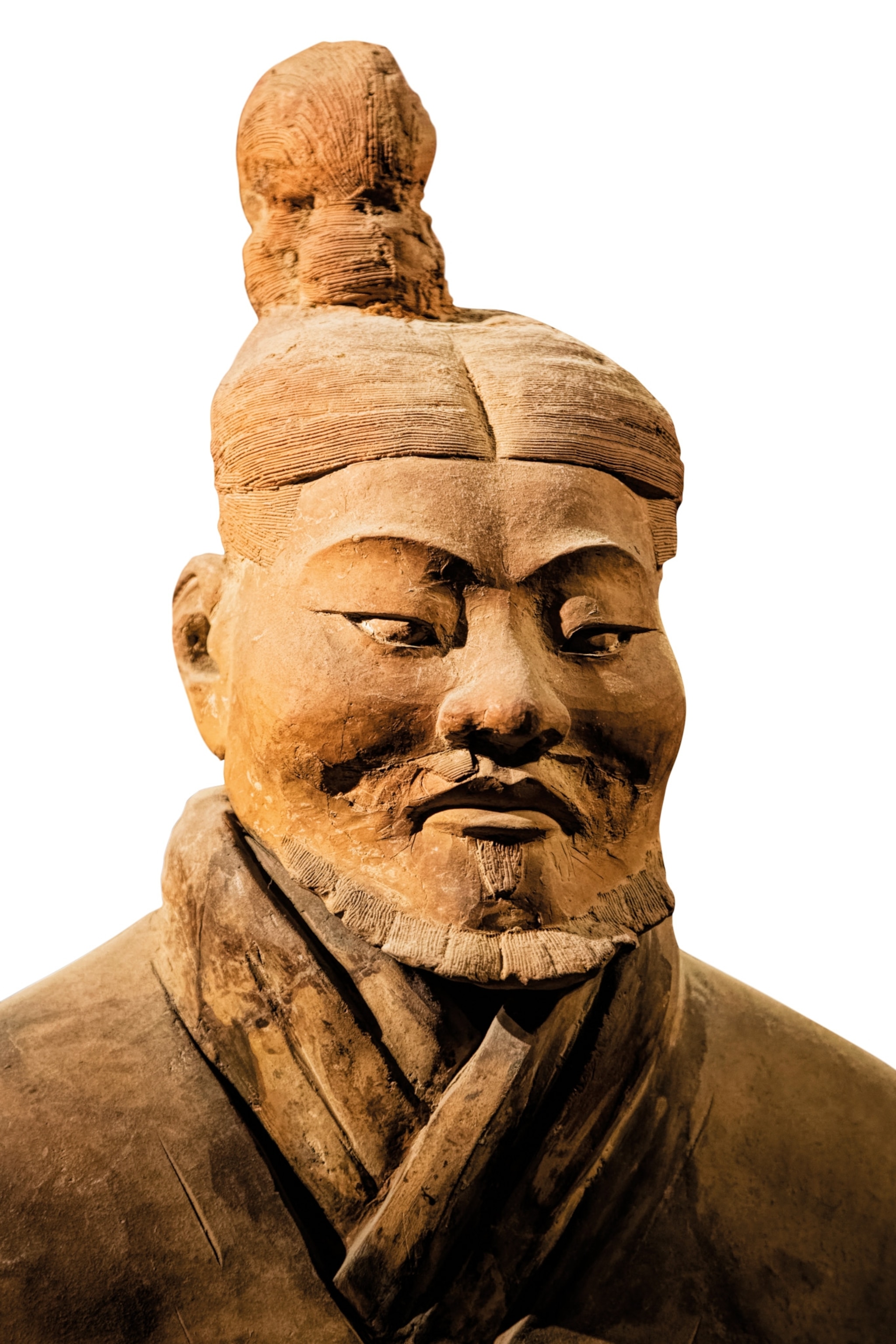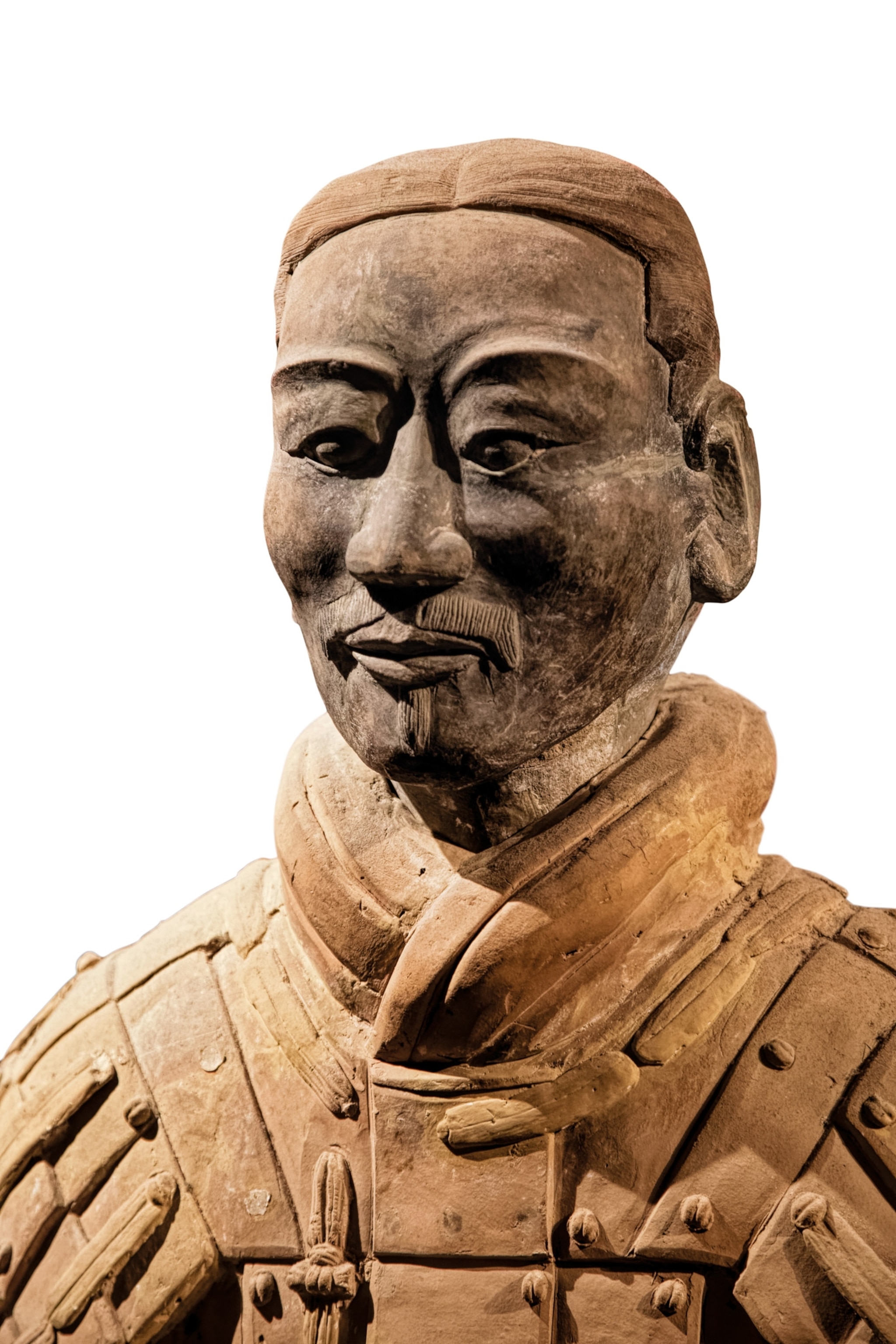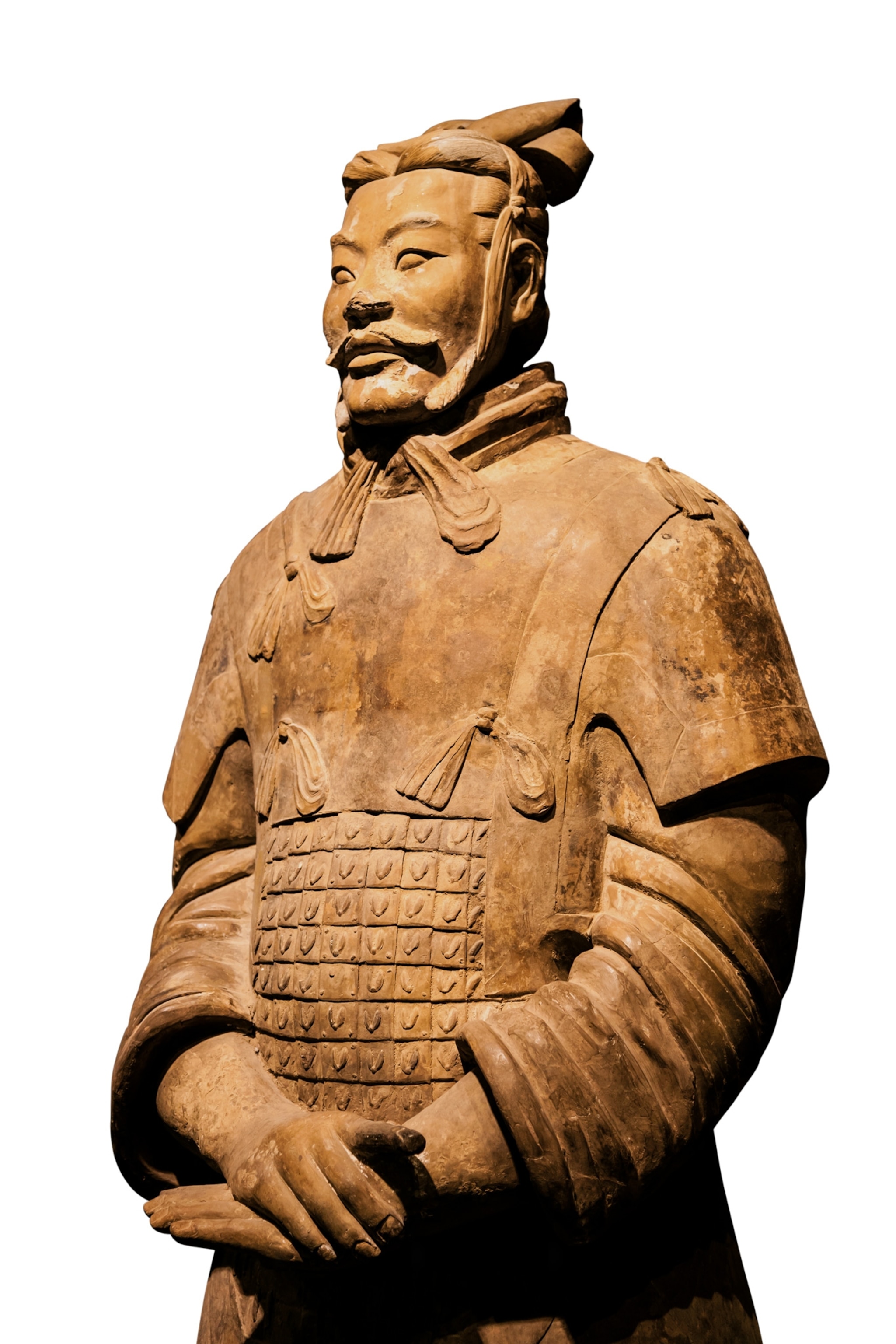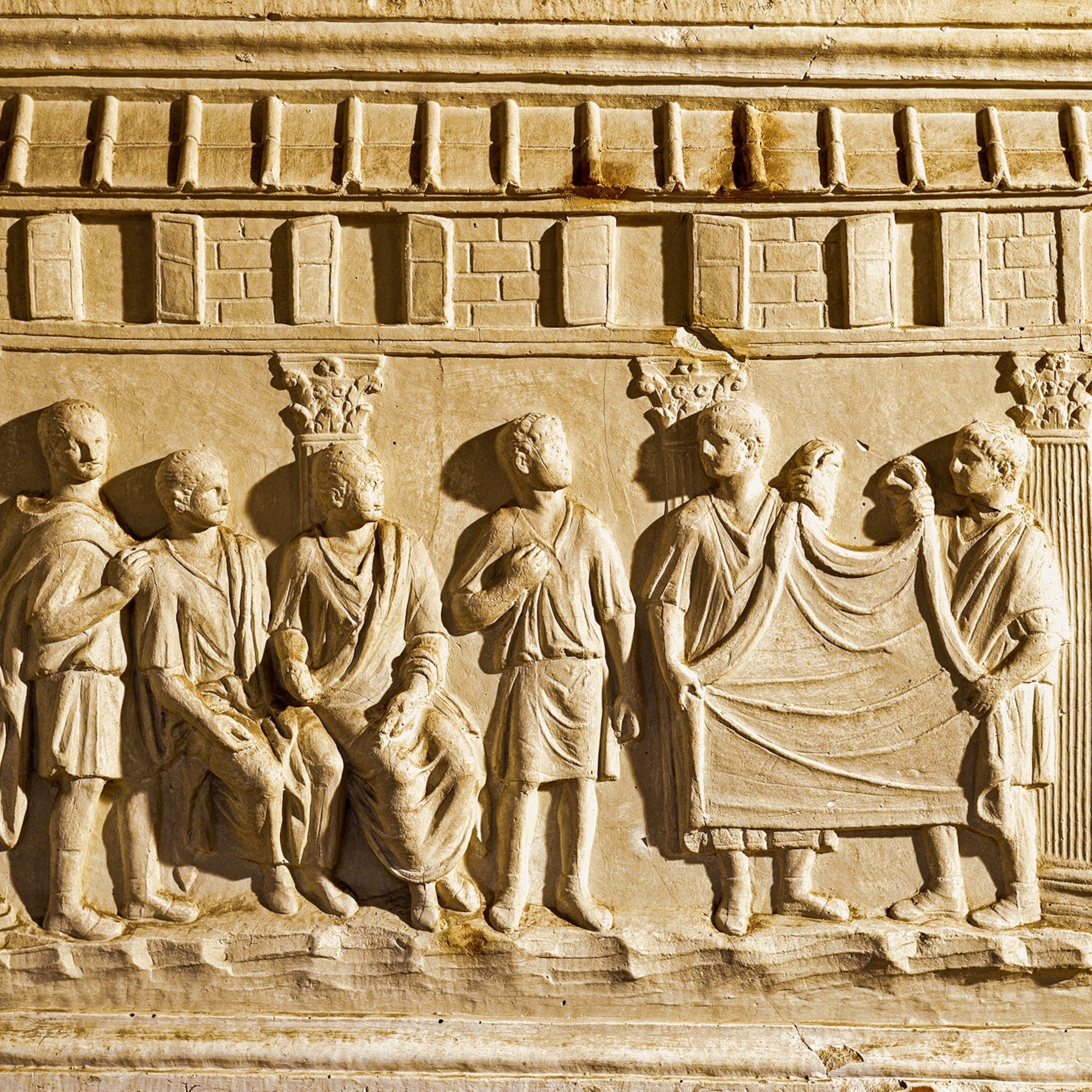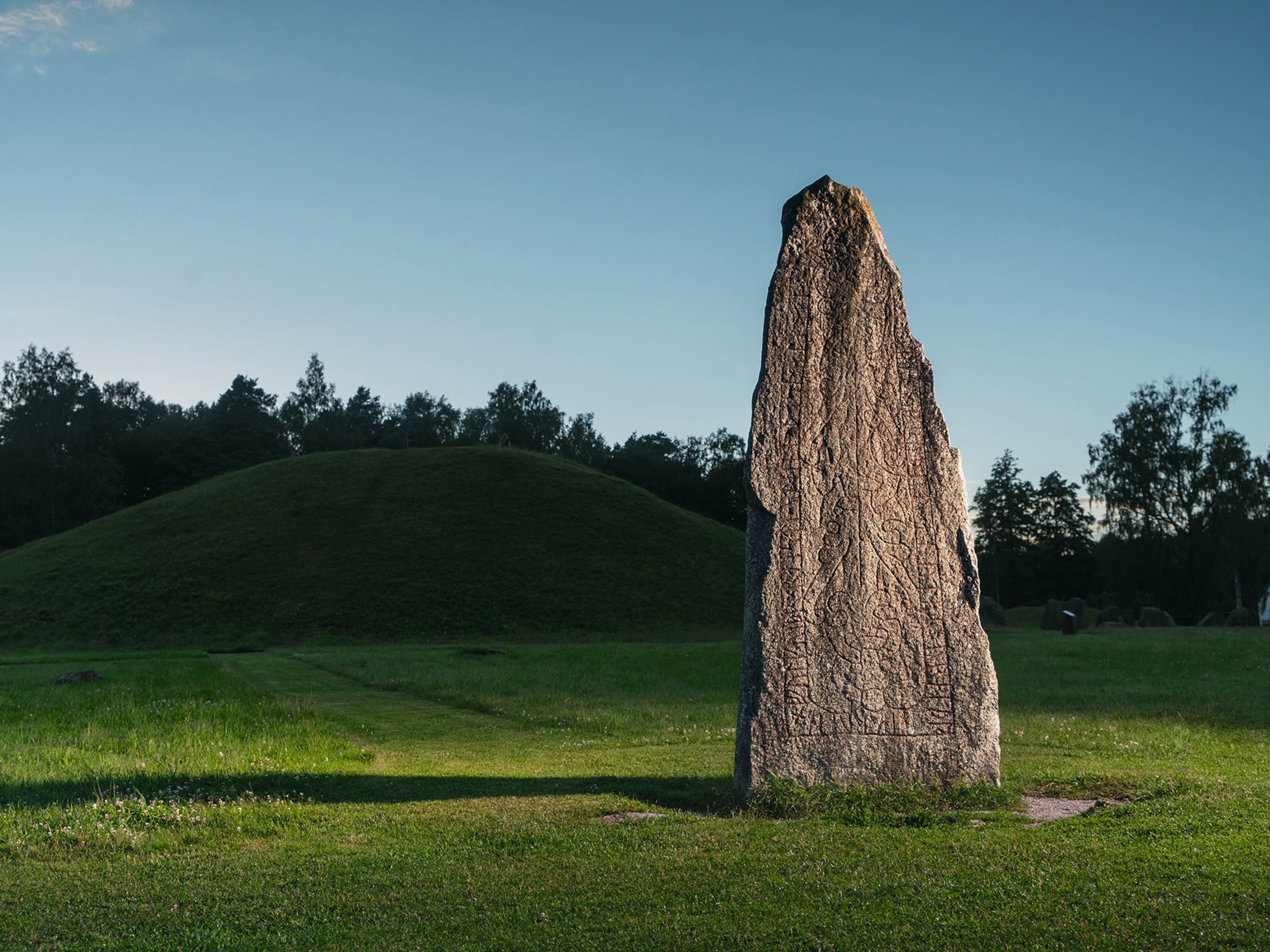
How were China's legions of terra-cotta warriors made? Experts have pieced it together.
Creating thousands of live-size soldier statues to protect the mausoleum of China's first emperor was a massive operation, requiring many steps and close collaboration.
The land belonging to farmer Yang Zhifa in eastern China was covered by fruitful orchards of persimmon and pomegranate trees. In 1974, while digging a well, his spade struck something unexpected in the soil: a man’s head.
On closer inspection, Yang saw that the object was clay, not bone. He alerted the local authorities, and over the months that followed, Chinese archaeologists made an astonishing discovery. Under Yang’s peaceful orchards lay a man-made army: thousands of life-size terra-cotta soldiers and hundreds of sculpted horses, along with bronze carriages and weapons.
The figures were unearthed less than a mile to the east of the third-century B.C. resting place of Qin Shi Huangdi, China’s first emperor and one of the most important figures in its history. Today a UNESCO World Heritage site that attracts millions of visitors every year, the complex—including not only the vast terra-cotta army but also the tombs of real people—is regarded as the biggest funerary complex in the world, extending more than 25 square miles.
Four pits have so far been excavated: The first pit—by far the biggest—contains the infantry; the second pit contains archers, chariots, infantry, and cavalry, and perhaps represents an encampment. The third pit, much smaller, contains high-ranking officials, and the fourth one is empty (some think the emperor died before its contents were completed).
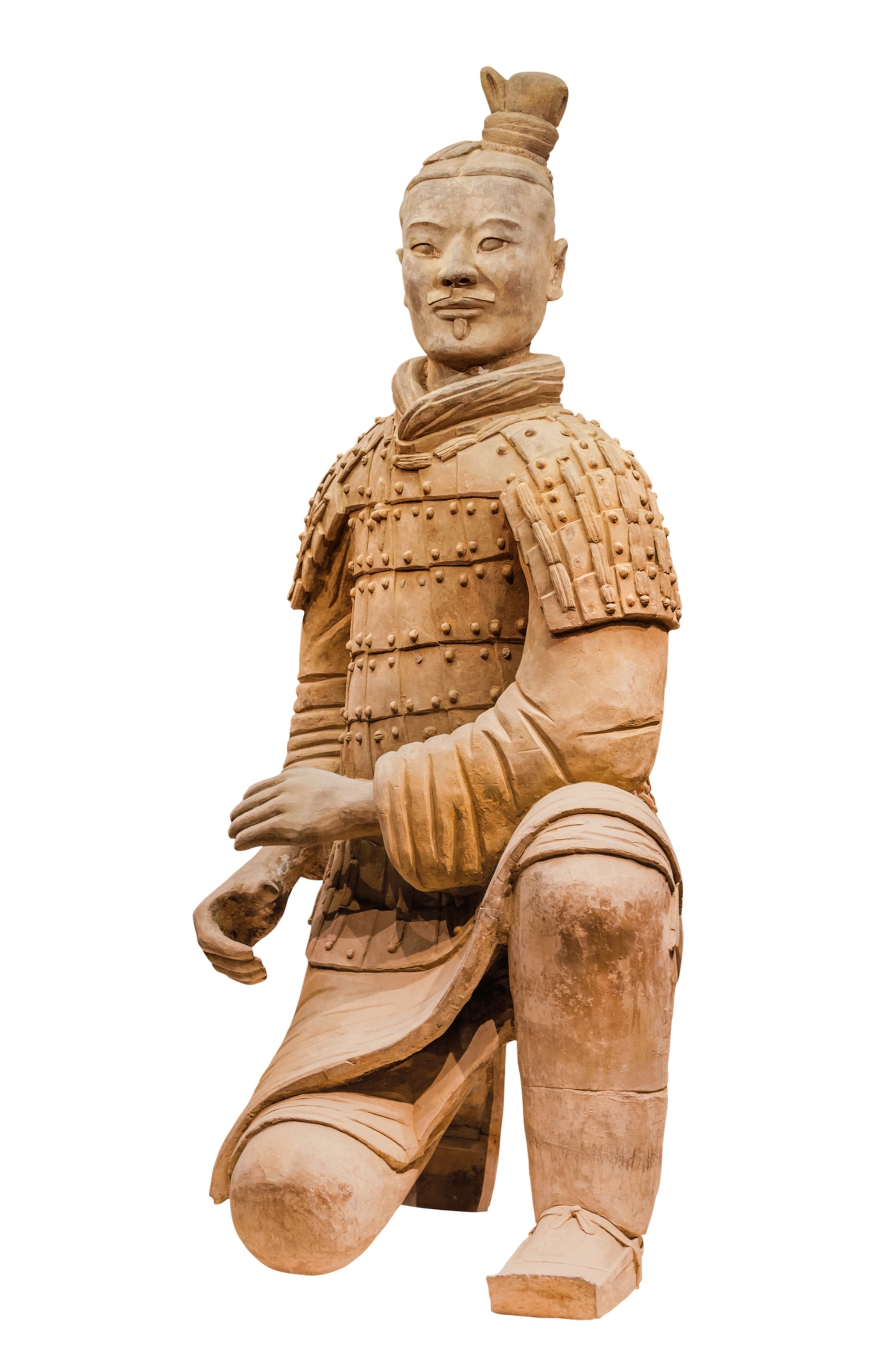
More than 2,000 warriors have been recovered to date, but that’s just a fraction of the army. The total number is believed to be around 8,000, and archaeologists suspect more pits still lie undiscovered. Once painted in vivid colors, the figures represent numerous military occupations and ranks and display a variety of different facial features and costumes. The vast resources and manual labor required to manufacture them 2,200 years ago has made them a global icon of the military and artistic achievement of the Qin dynasty. (See the warriors in color.)
Unity and tyranny
The future emperor was born Zhao Zheng in 259 B.C. At age 13 he became king of the province of Qin. By 221 B.C. he had conquered several other provinces and proclaimed himself Qin Shi Huangdi (“the First August Emperor of Qin”). His short reign was marked by major advances in centralizing power as well as acts of tyranny. He standardized writing, weights and measures, and monetary and legal systems. During his reign, building the Great Wall began. The first emperor also won notoriety for burning books and persecuting intellectuals. (Did the Great Wall of China work?)

The enormous mausoleum he built for himself near Xi’an speaks of the resources at his disposal: Sources say Qin Shi Huangdi employed hundreds of thousands to build the complex and its contents. He also altered the landscape for his funerary complex: Courses of rivers had to be altered. Digging the pits for the figures would have required an army of laborers to carry away the displaced soil.
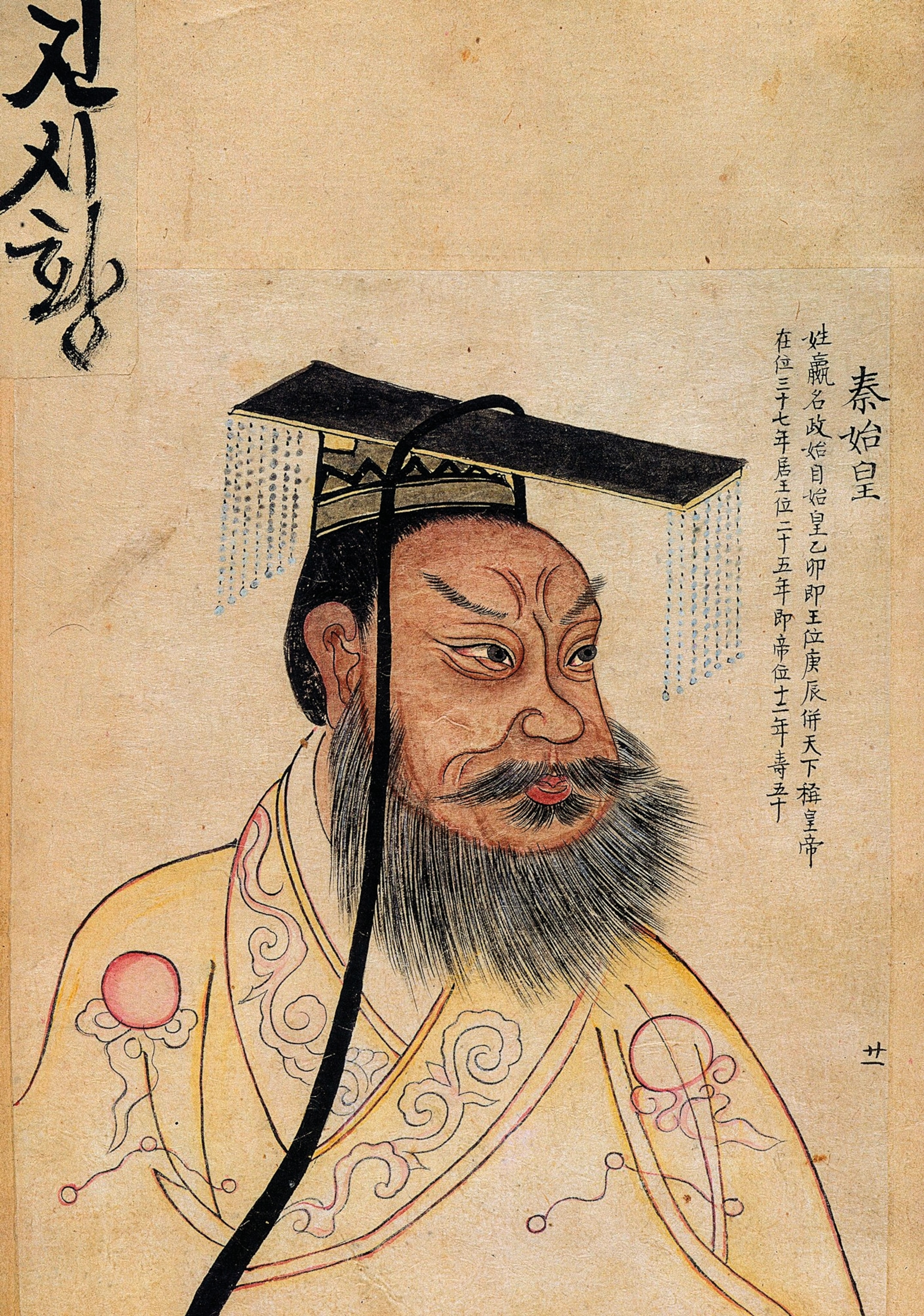
The production of the figurines is a marvel of both logistics and artistry: Many warriors stand as tall as six feet and weigh about 450 pounds. Their beauty becomes more impressive up close, revealing the details of their hairstyles, their facial features, the realistic folds of their clothing, and the remnants of the pigments once used in their coloring. Scholars have long debated as to the methods behind their creation and have done hands-on experiments to try to reverse engineer the process.
The feat is even more impressive in the context of Qin Shi Huangdi’s reign. Even assuming that he had ordered its construction before unifying China and proclaiming himself emperor in 221 B.C., there were only a few years to complete the work before his death, in 210 B.C. During his reign, China was a mosaic of cultures, ethnicities, and religions. The idea of a centralized and authoritarian political power giving orders from a remote capital through civil servants was still alien and highly difficult to communicate and implement. (Trading Chinese silk for Persian horses helped create the Silk Road.)

Seeking immortality
The first emperor regarded himself as the ruler of an immense territory and a monarch who unified the world of the spirits. The written sources explain that Qin Shi Huangdi sought potions to extend his life and dispatched envoys to look for such elixirs. His great tomb is a testament to the quest of immortality, in that this great monument would remind future generations of his greatness.
Archaeologists have yet to excavate the emperor’s burial mound itself. To create it, workers excavated to a depth of 100 feet, then constructed a sepulchre before covering it with a pyramid-shaped mound standing more than 165 feet high. Much speculation surrounds what might be inside. China’s second-century B.C. historian Sima Qian recorded that the emperor’s remains might be protected by rivers of mercury and traps to stop intruders.
Both the mausoleum’s design and the materials used reveal the intention of surrounding himself with what he needed in the afterlife. Its construction was intended to reinforce his power while alive, an extraordinary display of the supremacy of a new sovereign, capable of mobilizing all the materials, workers, and knowledge needed to create something on an unparalleled scale and splendor.
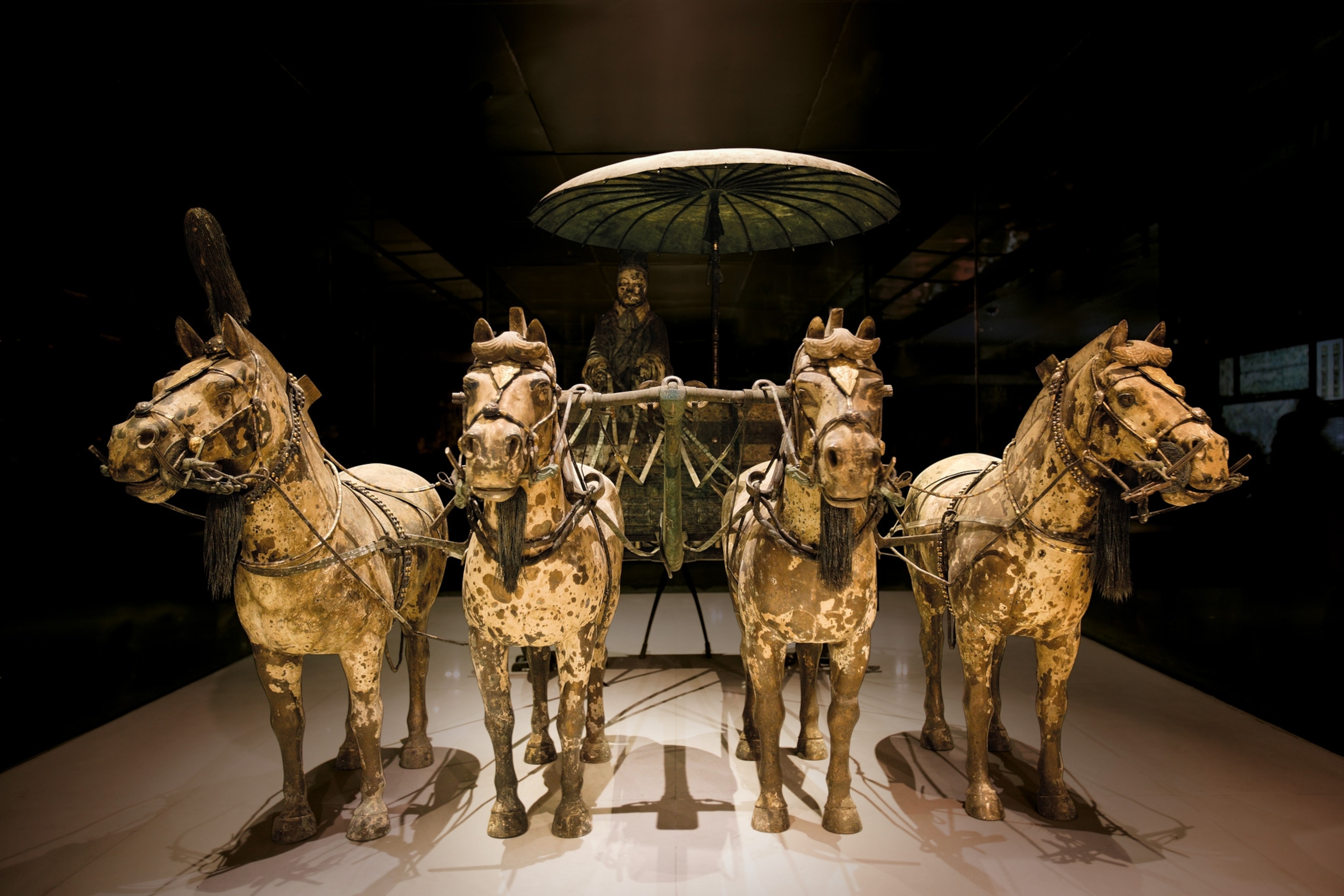
News about this ostentatious project probably resonated all the way to the outer limits of Qin China. It contributed to the mystic aura of an emperor so rich and powerful he could create a life-size model army, drawn up and ready for all eternity, facing east toward the territories that he had so spectacularly conquered.
Methods of mass production
How was it possible to bring together the raw materials, the technical know-how, and the labor to build thousands of life-size soldiers in the third century B.C.? Producing the terra-cotta army required a standardized mass-production system, along with highly efficient project management. Reverse engineering studies carried out by a team of archaeologists (including the author of this article) have attempted to recreate how these artifacts were made, based on their scientific analysis.
They have proposed that the labor force was organized in relatively small teams, working in parallel to produce separate pieces. The warriors were not produced and assembled in one workshop; instead, separate groups of artisans, each headed by a master, assembled the warriors one by one, which, once painted, would be taken down to the pits. Likewise, the weapons that the figures originally held were likely made in different armories, collected, and then “assigned” to their figure. The setting up and coordinating of numerous workshops requires huge investment, but it is better placed to face any unexpected complications: If there is a set-back, a new team could be activated to resolve the issue. (An American man stole a warrior's thumb. Here's what happened next.)
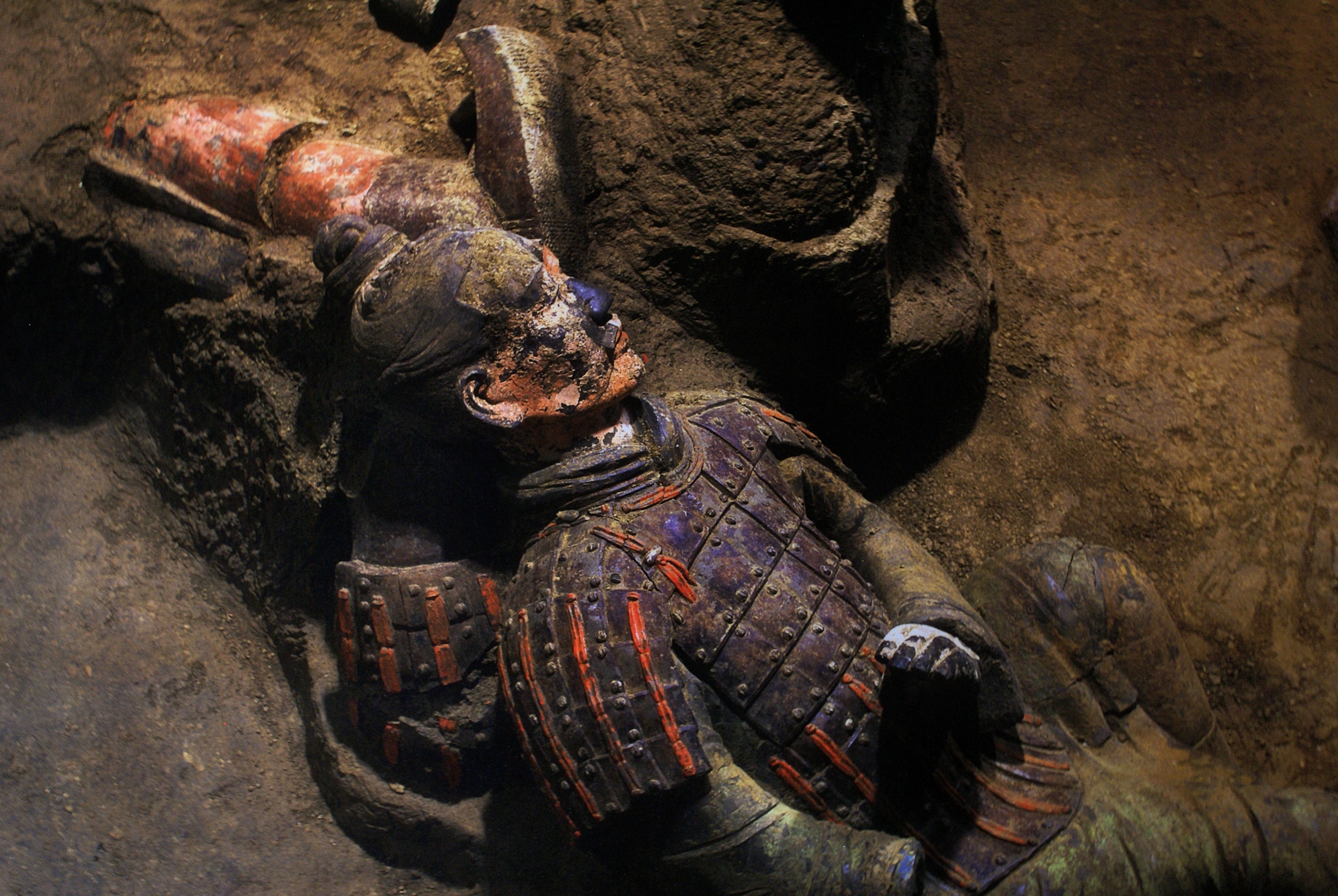
It is often said of Qin Shi Huangdi’s terra-cotta army that no two figures are exactly the same. While it is perhaps difficult to believe that the thousands of warriors are all portraits of individuals, it is clear that great effort was expended in giving the figures unique features. Some investigators believe that the producers worked with a set range of different appearances, which, when mixed together, combined to give an impression of individuality.
Hair makes the man
Although millions of tourists who visit annually see these thousands of faces ranged before them as an unforgettable spectacle, these figures were not created for the eyes of the living. They are warriors for the afterlife. The modern visitor’s visual experience, overlooking endless rows of soldiers, is a privilege that even the emperor himself might not have experienced. After placing the groups of figures in their formations, these passages were covered with large wooden beams, sealed with reed mats, and buried under tons of soil.
You May Also Like
Despite Qin Shi Huangdi’s desire for immortality, the monumental complex faced danger from the outset. Shortly after the emperor’s death, the Qin dynasty fell apart, to be replaced by the Han. In the turmoil of that transition, there is evidence that the pits were damaged by flooding and fire.


